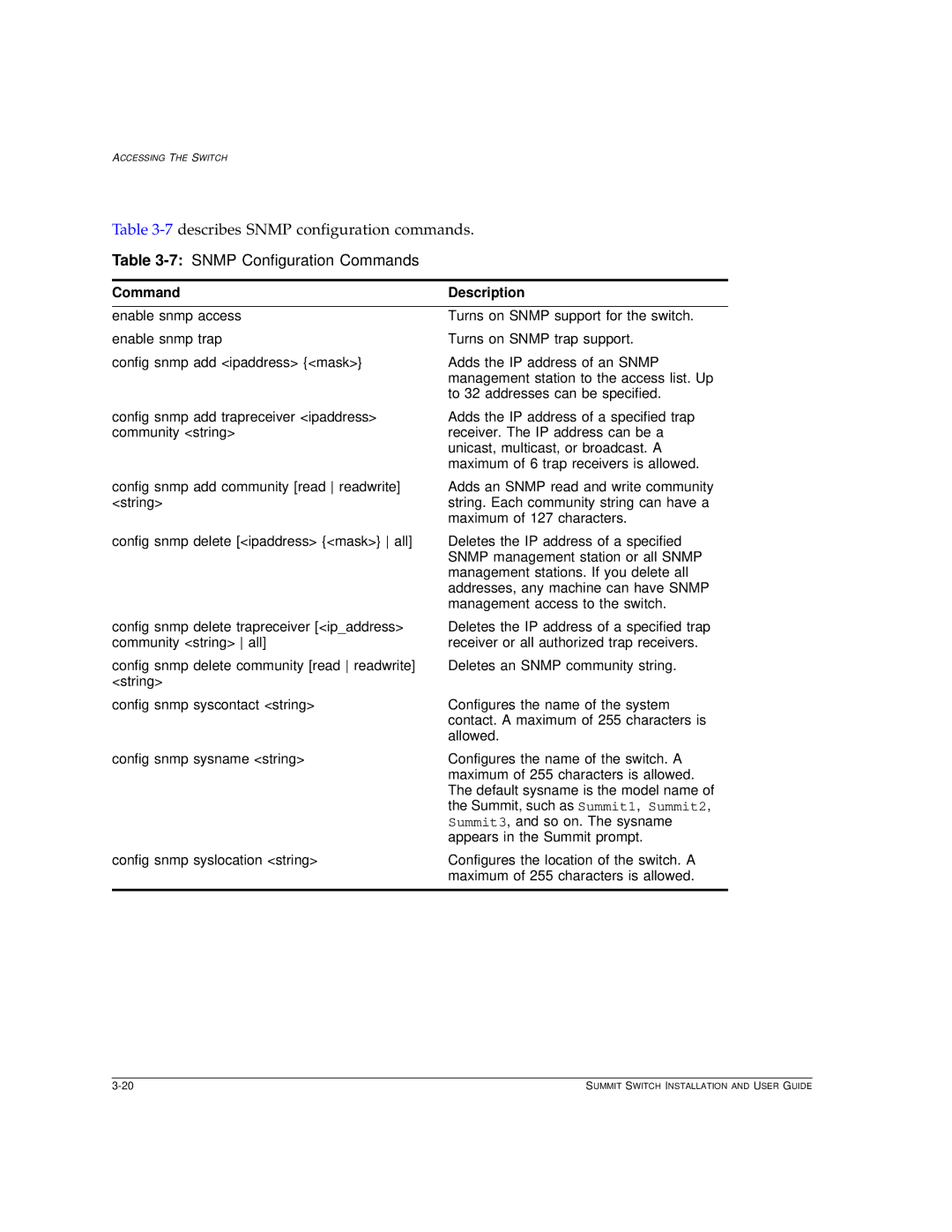
ACCESSING THE SWITCH
Table
Table 3-7: SNMP Configuration Commands
Command | Description |
|
|
enable snmp access | Turns on SNMP support for the switch. |
enable snmp trap | Turns on SNMP trap support. |
config snmp add <ipaddress> {<mask>} | Adds the IP address of an SNMP |
| management station to the access list. Up |
| to 32 addresses can be specified. |
config snmp add trapreceiver <ipaddress> community <string>
config snmp add community [read readwrite] <string>
Adds the IP address of a specified trap receiver. The IP address can be a unicast, multicast, or broadcast. A maximum of 6 trap receivers is allowed.
Adds an SNMP read and write community string. Each community string can have a maximum of 127 characters.
config snmp delete [<ipaddress> {<mask>} all]
config snmp delete trapreceiver [<ip_address> community <string> all]
config snmp delete community [read readwrite] <string>
Deletes the IP address of a specified SNMP management station or all SNMP management stations. If you delete all addresses, any machine can have SNMP management access to the switch.
Deletes the IP address of a specified trap receiver or all authorized trap receivers.
Deletes an SNMP community string.
config snmp syscontact <string> | Configures the name of the system |
| contact. A maximum of 255 characters is |
| allowed. |
config snmp sysname <string> | Configures the name of the switch. A |
| maximum of 255 characters is allowed. |
| The default sysname is the model name of |
| the Summit, such as Summit1, Summit2, |
| Summit3, and so on. The sysname |
| appears in the Summit prompt. |
config snmp syslocation <string> | Configures the location of the switch. A |
| maximum of 255 characters is allowed. |
|
|
SUMMIT SWITCH INSTALLATION AND USER GUIDE |
